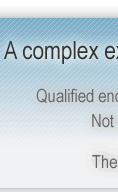 |
 |
||||||
 |
 |
 |
 |
||||
Questions and their sound preparation are the largest task, however later the higher value of the system as well. It is particularly important to emphasize, that accuracy, clearness, unambiguousness and correct classification of each question to four predefined complexity classes provide for proper work of examination system as a whole. Just because of that there is a possibility of using several types of questions, as it was already mentioned in the introductory part. Following up questions, changes and revisions and successfulness of their passing in the past, as well as number of appearance of a particular question in the examination are possibilities further upgrading testing quality. These data enable good configuration of the system operation from the administrative aspect. Compilation of questions is made by writing the text in corresponding sections of administrative interface and adding path to certain images or animations / interactive simulations used within questions. Any time, depending on rights, administrators may correct or alter questions. |
 |
||||||
Types of Questions Interactive questions are designed using Macromedia Flash or Authorware technology, so that the content of each question is fully arbitrary. Number of steps to be performed by the Attendant in order to solve successfully the set task is also arbitrary and shall vary from question to question. All such questions have in common that they evaluate the user with successfulness of 0 - 100% and on the basis of that successfulness, the attendant achieves proportional number of points in relation to total points the question allocates. It is also possible to score the question in: correct/incorrect manner. These questions are particularly useful in testing the knowledge of particular actions within various computer applications. Contrary to the classic way of examining where the user is usually required to identify which is the function of certain tools or menus, here is the user required to perform a complete action by simulation of operation on the real tools - e.g. to send e-mail message by using the MS Outlook and to add to it the adequate signature... |
|||||||
Scoring Questions may be scored (evaluated on points) in one of two basic ways: b) According to the predefined criterion
|
 |
||||||
| Home Try online demo References Contact | |||||||




